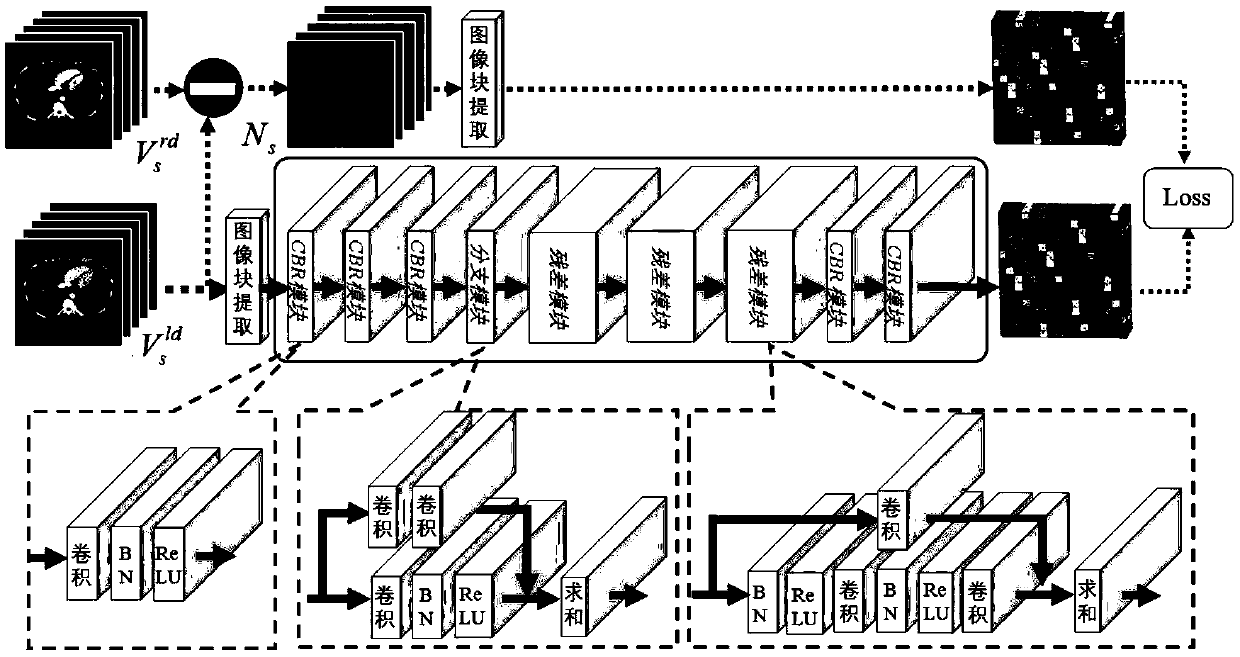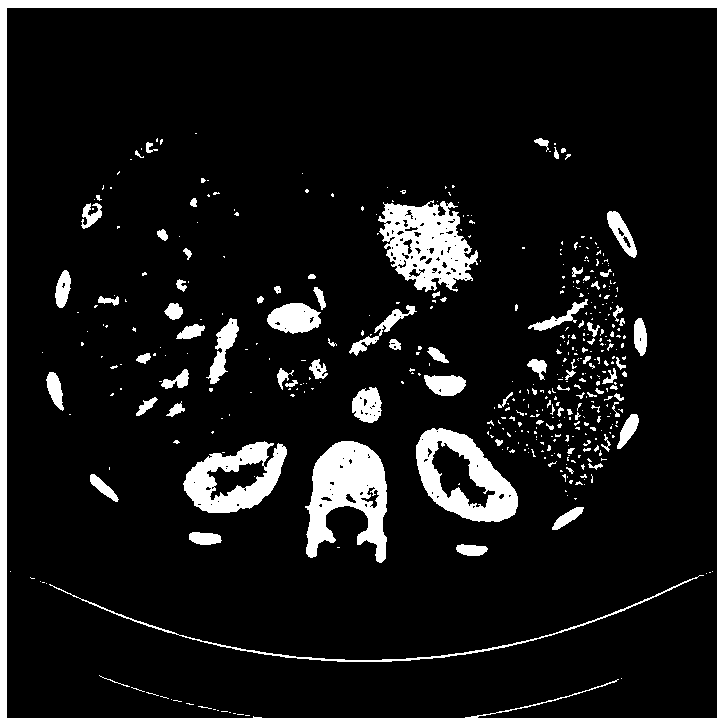Convolutional neural network-based low-dose CT image decomposition method
A convolutional neural network and CT image technology, applied in the field of low-dose CT image decomposition and low-dose CT image decomposition based on convolutional neural network, can solve the problem of not being able to effectively separate star-streaked artifacts and noise, and achieve The test time is short, the image effect is improved, and the processing effect is good
- Summary
- Abstract
- Description
- Claims
- Application Information
AI Technical Summary
Benefits of technology
Problems solved by technology
Method used
Image
Examples
Embodiment 1
[0042] refer to Figure 1-10 , the convolutional neural network-based low-dose CT image decomposition method of the present embodiment comprises the following steps:
[0043] Step 1. Obtain several sets of matching low-dose CT projection data and conventional-dose CT projection data respectively (in specific operation, the scanning current at low-dose is one-fifth to one-third of the scanning current at conventional dose), and Reconstruct the corresponding training images respectively: low-dose CT images and conventional-dose CT images low dose CT images and conventional-dose CT images Subtract to get noise artifact image
[0044] Step 1, low-dose CT image is obtained by analytical FBP reconstruction algorithm, conventional dose CT image It is obtained through an iterative TV (Total Variation) reconstruction algorithm. Specifically, using a specific training data set, such as low-dose CT imaging of the abdomen, a large number of matching abdominal projections can...
PUM
 Login to View More
Login to View More Abstract
Description
Claims
Application Information
 Login to View More
Login to View More - R&D
- Intellectual Property
- Life Sciences
- Materials
- Tech Scout
- Unparalleled Data Quality
- Higher Quality Content
- 60% Fewer Hallucinations
Browse by: Latest US Patents, China's latest patents, Technical Efficacy Thesaurus, Application Domain, Technology Topic, Popular Technical Reports.
© 2025 PatSnap. All rights reserved.Legal|Privacy policy|Modern Slavery Act Transparency Statement|Sitemap|About US| Contact US: help@patsnap.com



